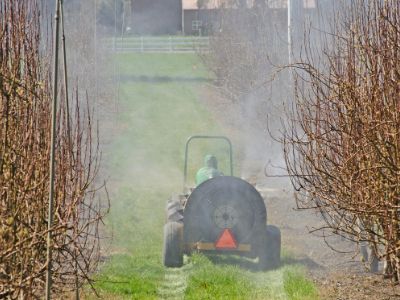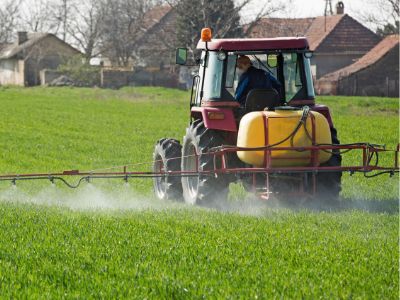In the diverse world of horticulture and agriculture, there is a wide range of equipment designed to provide efficiency and productivity for the grower. Foggers, mist blowers, and sprayers play an important role in this.
To the untrained eye, they might look similar and interchangeable. However, each one is distinctly designed to carry out specific tasks. The primary difference between these different liquid applicators is the way they disperse fluid and the size of the droplets they produce. Foggers and mist blowers disperse their liquid into the air while sprayers directly target surfaces.
There are many factors that affect these different aspects, in this article, we will explain these different aspects and how each one of these tools is used.
Foggers, Mist Blowers, and Sprayers: Defining Each One
The definition of a fogger, mist, blower, and sprayer varies widely depending on the industry and application. Each term broadly defines a family of related equipment that operates in a similar manner and produces a specific result.
Here are the general definitions for foggers, mist blowers, and sprayers:
Foggers

Foggers are units that disperse pesticides or other materials into the air as fog. They’re commonly used to control pests and odor or for sanitizing purposes. Foggers are designed in such a way that they create tiny droplets of the intended chemical or material, which are then suspended in the air for a certain time period to achieve the desired result.
Some foggers use heat to turn the droplets into the fog. They are often propane-fueled, but there are electronic versions.
Foggers are employed in different sectors. In agriculture, they’re used to control pests, while in public health areas, they aid in mosquito control and sanitization of public spaces.
Mist Blowers

Mist blowers are similar to foggers but employ a different mechanism to create the mist. They function by blasting air over a small opening, creating a mist of pesticide or other material. Mist blowers are ideal for large spaces, and they typically generate larger droplets compared to foggers.
Mist blowers are also called “air blast sprayers”. They are often used in orchards and vineyards because air is needed to blow the liquid from the spray nozzle to reach the tree or vine and provide adequate coverage on the plants.
There are small versions that are carried on the back of the operator and there are large pull-type mist blowers that a tractor pulls between rows of trees.
Sprayers

We have obviously discussed sprayers a ton on this website. If you Are interested in more details on the specific functions and components of a sprayer be sure to check out these different resources below. But generally speaking, sprayers are devices that spray liquid in a targeted direction.
They’re commonly used for a broad range of applications, including, Spring crops, pesticide applications, and lawns. There are several different types of sprayers made to handle all the different applications out there
Sprayer resources:
Parts of a Sprayer & Their Function
Distinguishing Between Foggers, Mist Blowers, and Sprayers
Foggers, mist blowers, and sprayers all serve the key purpose of dispersing substances, yet each operates in a distinctive manner.
Foggers and mist blowers are similar. They are both used when the target is a more general area and the goal is to eliminate or expel a target pest in that airspace. The way in which they work is different. Mist blowers generally use air to push the small droplets out in a general direction, while foggers produce dinner droplets that are atomized into a fog. The fog slowly drifts over the area where the operator desires.
A sprayer on the other hand is used to cover the surface of plant tissue or cover the ground thoroughly. Foggers and mist blowers are less precise than sprayers, but they are used for areas a sprayer cannot reach.
What Method is Best: Foggers vs Mist Blowers vs Sprayers
The decision to use a fogger, mist blower, or sprayer is largely dependent on the user’s specific requirements. The preferred tool will be determined by aspects such as the target pest, the surface or area that is going to be treated, the substance to be applied, and the coverage requirements.
When to Use Foggers, Mist Blowers, and Sprayers
Foggers
- Indoor pest control
- Greenhouses and enclosed spaces
- Mold and odor control
- Disinfection and sanitization
Mist Blowers
- Large outdoor areas (e.g., orchards, vineyards)
- Agriculture and forestry
- Mosquito control in wooded areas
- Public health mosquito abatement programs
Sprayers
- General agriculture and gardening
- Turf management (e.g., golf courses)
- Weed control in non-crop areas
- Pest control in residential and commercial areas
Advantages and Disadvantages of Sprayers, Foggers, and Mist Blowers
| Equipment Type | Advantages | Disadvantages |
|---|---|---|
| Foggers | -Reach inaccessible areas -Thorough coverage in enclosed spaces -Automatic dispersion versions are available | -Drift and dispersion of fine droplets Inhalation risk -Takes time to work |
| Mist Blower | -Quick application -Uniform coverage | -Limited control of where the mist goes -Affected by wind |
| Sprayer | -Precise control -Can spray large droplets for less drift | -Precise calibration needed -Labor intensive when covering large areas with hand sprayers |
Conclusion
Although foggers, mist blowers, and sprayers are all designed to disperse liquids for pest control, they are different in how they work. The differences are not so subtle when you understand how they work and how they are used.

